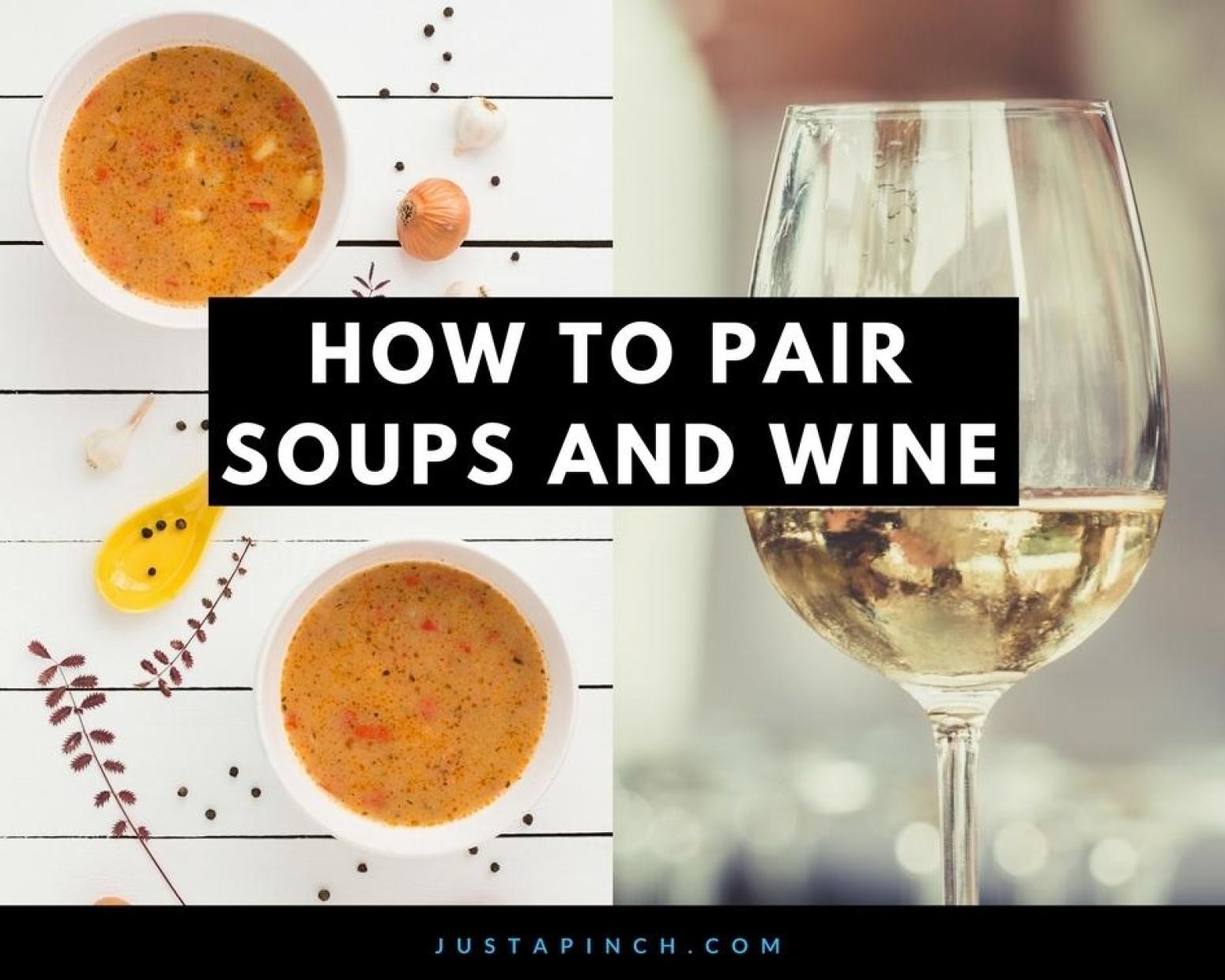Pairing soups and wine can be tricky. Besides there being many types of soup (stews, chowder, broth-based, etc.), soups are liquid and pairing liquid with liquid is strange. In reality, the proper wine will enhance the flavors of the soup.
The easiest, and tastiest, way to think about wine and soup is to look at the ingredients in the soup. Determine what the main ingredient is and think about what type of wine would go great with that.
If you’re not sure about basic wine pairings, take a look at our easiest wine pairing guide ever. It’s got great tips.
Pairing Examples
Here are examples of popular soups and wine suggestions.
- Chicken Noodle Soup: Try a light white like Pinot Grigio or a dry Chardonnay. If choosing Chardonnay, avoid any heavy oak blends.
- Tomato Soup: White or red will pair nicely with tomato soup (especially if served with grilled cheese). If you’re typically drawn to whites, try a fruity Sauvignon Blanc. For reds, a more full-bodied Chianti or Merlot is delightful.
- Chicken Tortilla Soup: This hearty soup requires a hearty wine. Try reds like Tempranillo, Cabernet Sauvignon, Rioja or Sangiovese. They all full-bodied with fruit characteristics. With white wine, Sauvignon Blanc pairs well.
- French Onion Soup: A Beaujolais or Pinot Noir will be your go to. Both are very light, low in tannins and filled with berry flavor that are lovely complements the onion soup ingredients.
- New England Clam Chowder: White is what you’ll grab if serving New England Clam Chowder thanks to the seafood. Try a buttery Chardonnay, a fruity Pinot Gris, or a dry, full-bodied Viognier.
- Corn Chowder: The buttery flavor in a Chardonnay pairs extremely well with the sweet, creamy corn chowder. Or, try a Riesling. The acidity cuts through the heavy chowder ingredients.
- Beef Stew: Beef stew is a rich, complex dish and pairs well with bolder, full-bodied red wines. Ask the sommelier about Cabernet Sauvignon, Merlot, or Tempranillo.
- Chili: Full of spice, Malbec’s bring out flavors in chili. Also, try a Zinfandel or Cabernet Sauvignon. What you’re looking for is a medium to full-bodied red.
These are just a few examples of pairings. Other elements, like where the wine originates, comes into play too. Wines from different regions each have their own flavor distinctions, so ask questions when you’re at a restaurant. A sommelier can provide great insight. But, in the end, go with what you like. Your taste buds are never wrong.
